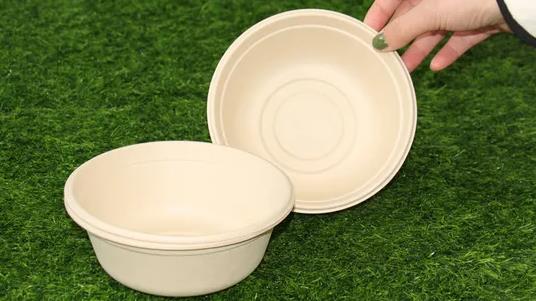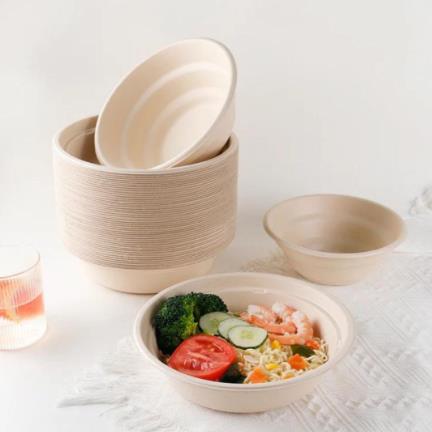
Content Menu
● Understanding Biobased Disposable Bowls
● Key Features of High-Quality Biobased Disposable Bowls
● The Importance of Sustainability
>> Eco-Friendly Manufacturing Practices
● Quality Control Measures
● Customer Feedback and Continuous Improvement
● Technological Advancements in Production
● Marketing Strategies for High-Quality Factories
● Case Studies of Successful Biobased Disposable Bowl Factories
>> Case Study 1: Hebei Gurui
>> Case Study 2: GreenWare Solutions
>> Case Study 3: Nature's Tableware
● Conclusion
● FAQ
>> 1. What materials are commonly used in biobased disposable bowls?
>> 2. How can I determine if a biobased bowl is compostable?
>> 3. Are biobased disposable bowls microwave-safe?
>> 4. Can I customize my order of biobased disposable bowls?
>> 5. What are the environmental benefits of using biobased disposable bowls?
In recent years, the demand for sustainable and eco-friendly products has surged, leading to a significant rise in the popularity of biobased disposable bowls. These products are not only practical for food service but also contribute to reducing environmental impact. However, not all biobased disposable bowl factories are created equal. In this article, we will explore the key factors that make a high-quality biobased disposable bowl factory stand out.

Understanding Biobased Disposable Bowls
Biobased disposable bowls are made from renewable resources, such as plant materials, rather than traditional petroleum-based plastics. This shift towards biobased materials is crucial in combating plastic pollution and promoting sustainability. High-quality biobased disposable bowls are designed to be sturdy, functional, and environmentally friendly.
Key Features of High-Quality Biobased Disposable Bowls
1. Material Quality: The best biobased disposable bowls are made from high-quality materials that ensure durability and performance. Common materials include PLA (polylactic acid), which is derived from corn starch, and other plant-based fibers.
2. Design and Functionality: A well-designed bowl should be leak-proof, microwave-safe, and able to hold hot or cold foods without compromising its integrity. This functionality is essential for both consumers and food service providers.
3. Certification: Look for certifications such as ASTM D6400 or EN 13432, which indicate that the products meet specific compostability standards. These certifications ensure that the bowls will break down in a composting environment.
4. Production Processes: Factories that prioritize sustainable production processes often stand out. This includes using renewable energy sources, minimizing waste during production, and implementing efficient manufacturing techniques.
5. Customization Options: A high-quality factory often offers customization options for their products, allowing businesses to brand their disposable bowls according to their unique needs.
The Importance of Sustainability
Sustainability is at the core of what makes a biobased disposable bowl factory stand out. Consumers are increasingly aware of their environmental footprint and prefer products that align with their values. Factories that adopt sustainable practices not only contribute to a healthier planet but also attract a loyal customer base.
Eco-Friendly Manufacturing Practices
- Waste Reduction: Implementing strategies to reduce waste during production is crucial. High-quality factories often recycle scrap materials and minimize off-cuts.
- Water Conservation: Sustainable factories prioritize water conservation by using closed-loop systems that recycle water used in production.
- Energy Efficiency: Utilizing energy-efficient machinery and renewable energy sources can significantly reduce a factory's carbon footprint.

Quality Control Measures
To ensure the production of high-quality biobased disposable bowls, rigorous quality control measures must be in place:
1. Raw Material Inspection: Before production begins, raw materials should be thoroughly inspected for quality and compliance with industry standards.
2. In-Process Quality Checks: Regular checks during the manufacturing process help identify any defects early on, ensuring that only high-quality products reach consumers.
3. Final Product Testing: After production, bowls should undergo testing for strength, durability, and compostability to meet established standards.
Customer Feedback and Continuous Improvement
High-quality factories often prioritize customer feedback as part of their continuous improvement process. By actively seeking input from clients regarding product performance and usability, these factories can make necessary adjustments to enhance their offerings.
Technological Advancements in Production
Investing in modern technology can set a biobased disposable bowl factory apart from its competitors:
- Automation: Automated processes can increase efficiency and reduce human error during production.
- Innovative Materials: Researching and developing new biobased materials can lead to better-performing products that meet evolving consumer demands.
- 3D Printing: Some factories are exploring 3D printing technologies to create custom molds for unique bowl designs quickly.
Marketing Strategies for High-Quality Factories
A strong marketing strategy is essential for high-quality biobased disposable bowl factories to effectively communicate their value proposition:
1. Educational Content: Providing educational resources about the benefits of biobased products can help inform consumers and promote sustainability.
2. Social Media Engagement: Engaging with customers on social media platforms can build brand loyalty and create a community around eco-friendly practices.
3. Partnerships with Eco-Conscious Brands: Collaborating with other businesses that prioritize sustainability can enhance credibility and expand market reach.
Case Studies of Successful Biobased Disposable Bowl Factories
To illustrate the principles discussed above, let's look at a few successful biobased disposable bowl factories:
Case Study 1: Hebei Gurui
The company has a professional R & D team of more than 30 people, independent research and development of pulp molding automatic forming machine, greatly reduce production costs, make the company's products more competitive, now serving a number of domestic industry head enterprises and export more than 30 countries and regions.
Case Study 2: GreenWare Solutions
GreenWare Solutions has made headlines for its commitment to quality control and customer satisfaction. By implementing rigorous testing protocols and actively seeking customer feedback, they have maintained a reputation for producing some of the most reliable biobased bowls on the market.
Case Study 3: Nature's Tableware
Nature's Tableware stands out due to its extensive customization options, allowing restaurants and catering companies to create branded disposable bowls tailored to their specific needs. Their focus on design aesthetics combined with functionality has garnered them a loyal customer base.
Conclusion
In conclusion, several factors distinguish high-quality biobased disposable bowl factories from their competitors. From material quality and sustainable manufacturing practices to rigorous quality control measures and effective marketing strategies, these elements contribute to the overall success of a factory in this growing industry. As consumers increasingly seek eco-friendly alternatives, investing in these key areas will not only enhance product offerings but also foster long-term relationships with environmentally conscious customers.

FAQ
1. What materials are commonly used in biobased disposable bowls?
Biobased disposable bowls are typically made from materials like PLA (polylactic acid), which is derived from corn starch, as well as other plant-based fibers such as sugarcane or bamboo pulp.
2. How can I determine if a biobased bowl is compostable?
Look for certifications such as ASTM D6400 or EN 13432 on the packaging or product description. These certifications indicate that the product meets specific compostability standards.
3. Are biobased disposable bowls microwave-safe?
Many high-quality biobased disposable bowls are designed to be microwave-safe; however, it's essential to check the manufacturer's specifications before use.
4. Can I customize my order of biobased disposable bowls?
Yes! Many high-quality biobased bowl factories offer customization options for branding purposes or specific design requirements.
5. What are the environmental benefits of using biobased disposable bowls?
Biobased disposable bowls help reduce reliance on fossil fuels, minimize plastic waste in landfills, and lower overall carbon emissions associated with traditional plastic production.

















